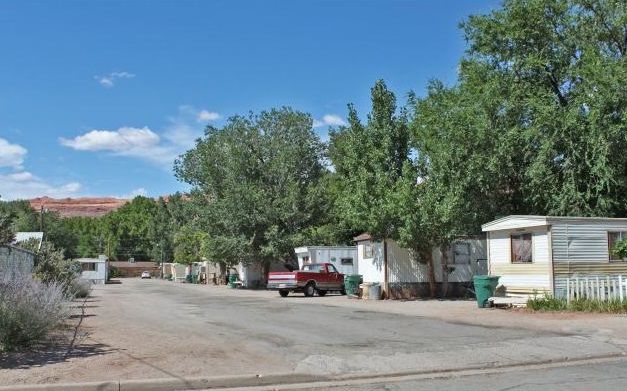Some information may be outdated.
During the city council meeting on Oct. 11, Moab City Finance Director Ben Billingsley presented the results of a Walnut Lane tenant survey.
The Walnut Lane affordable housing project is a longstanding project by the city to create up to 80 affordable housing units on the site of an existing mobile home park, but it has been plagued by setbacks: In September 2021, the project returned back to phase one after the city ended its contract with a construction company; since then, the city has drafted a Request for Proposals for a public/private partnership with development companies, though the city has not yet published it.
“As we developed that RFP, we found that maybe there was a gap in knowledge with the current tenants,” Billingsley said. “As one of the key objectives of this project is to protect the housing situations for those tenants that are living onsite currently, we found it appropriate to work with the Multicultural Center to engage in a survey with the residents to better understand their needs, wants, and desires for housing in the future.”
The Moab Valley Multicultural Center conducted the resident survey and was able to reach tenants in 21 out of 27 total occupied units. Rhiana Medina, the director of MVMC, noted in the presentation that there is currently a 6- to 12-month wait time for affordable housing relocation in Moab—the Walnut Lane project is attempting to construct units in phases, so the current tenants wouldn’t be displaced and could move into a new unit, but doing so would increase the project timeline. Billingsley said the goal of the survey was to ask tenants if that trade-off is worth it: did they want to wait the project out, or face being displaced for an ultimately shorter amount of time?
“The results of this survey were not what we as staff expected,” Billingsley said.
The survey found that the average duration of tenants on the property is nine years, and many tenants are families with school-aged children. Most of the tenants work at restaurants and hotels, and said they appreciated that their homes were so close to work and school.
The main issue with the Walnut Lane properties is that they were all built before 1976, and thus don’t meet Department of Housing and Urban Development-approved standards. Many of the trailers have constant maintenance issues; in the survey, when tenants were asked to rank the condition of their units, the majority of tenants said their units were in poor condition.
The survey also asked about a move incentive: if the city were to offer a move incentive, how many tenants would take advantage? The majority of tenants (10) said they were not at all likely to take advantage; two said they were very likely to. When asked about long-term housing preferences, 15 tenants said they wanted to stay on the property in different housing, a few others said they were interested in home ownership, and only one said they desire to eventually move out of Moab.
The tenants, by and large, want to stay on the property, Billingsley said.
Now, the city has to get ready to publish its RFP for a six-week response period. The RFP as it’s currently drafted lacks specificity, Billingsley said, because the city is seeking “creative solutions to the problems the project has faced and is facing.”
“This is a public/private partnership, so the city intends to maintain ownership of the underlying ground,” he said. “But really we’re looking at all options at this point, and a respondent could make a creative solution that could be considered a part of this, as long as it meets the criteria of the RFP.”
Appreciate the coverage? Help keep local news alive.
Chip in to support the Moab Sun News.





